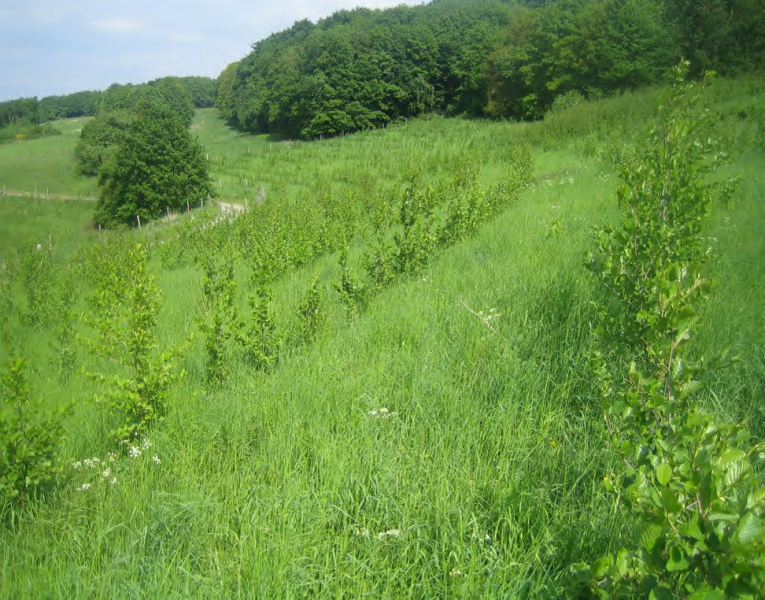Land use conversion is a general term for large scale geographic change. Afforestation is one such land conversion in which trees are planted on previously non forested areas. Afforestation may occur deliberately or through the abandonment of marginal agricultural land. Depending on the tree species planted and the intensity of forest management, afforestation may have more or less environmental benefits. The NWRM related benefits include potentially enhanced evapotranspiration associated with growing forests and better water holding capacity associated with forest soils. The greatest environmental benefits are probably associated with planting of indigenous broadleaves and low intensity forestry. Plantation forestry with exotic species is likely to be less beneficial to the environment. It should be mentioned that afforestation in dry areas can cause or intensify water shortage. Even though afforestation may reduce available water supply at local scale, forest cover increases water supply regionally and globally, in particular through the intensification of the water cycle.

Afforestation of a hill
Source: Gebhard Schueler’s presentation, NWRM Workshop 1
| Benefits | Level |
|---|---|
|
BP1 - Store runoff
|
High
|
|
BP2 - Slow runoff
|
High
|
|
BP5 - Increase evapotranspiration
|
High
|
|
BP6 - Increase infiltration and/or groundwater recharge
|
High
|
|
BP7 - Increase soil water retention
|
Medium
|
|
BP8 - Reduce pollutant sources
|
High
|
|
BP9 - Intercept pollution pathways
|
High
|
|
BP10 - Reduce erosion and/or sediment delivery
|
High
|
|
BP11 - Improve soils
|
Medium
|
|
BP12 - Create aquatic habitat
|
Medium
|
|
BP13 - Create riparian habitat
|
Low
|
|
BP14 - Create terrestrial habitats
|
High
|
|
BP15 - Enhance precipitation
|
Low
|
|
BP16 - Reduce peak temperature
|
High
|
|
BP17 - Absorb and/or retain CO2
|
High
|
|
ES1 - Water storage
|
High
|
|
ES2 - Fish stocks and recruiting
|
Medium
|
|
ES3 - Natural biomass production
|
High
|
|
ES4 - Biodiversity preservation
|
High
|
|
ES5 - Climate change adaptation and mitigation
|
High
|
|
ES6 - Groundwater/aquifer recharge
|
High
|
|
ES7 - Flood risk reduction
|
High
|
|
ES8 - Erosion/sediment control
|
High
|
|
ES9 - Filtration of pollutants
|
High
|
|
ES10 - Recreational opportunities
|
High
|
|
ES11 - Aesthetic/cultural value
|
High
|
|
PO1 - Improving status of biology quality elements
|
Low
|
|
PO2 - Improving status of physico-chemical quality elements
|
Low
|
|
PO3 - Improving status of hydromorphology quality elements
|
Low
|
|
PO4 - Improving chemical status and priority substances
|
Medium
|
|
PO5 - Improving quantitative status
|
Medium
|
|
PO6 - Improving chemical status
|
Medium
|
|
PO7 - Prevent surface water status deterioration
|
Medium
|
|
PO8 - Prevent groundwater status deterioration
|
Medium
|
|
PO9 - Take adequate and co-ordinated measures to reduce flood risks
|
High
|
|
PO11 - Better protection for ecosystems and more use of Green Infrastructure
|
Medium
|
|
PO12 - More sustainable agriculture and forestry
|
Medium
|
|
PO13 - Better management of fish stocks
|
Low
|
|
PO14 - Prevention of biodiversity loss
|
Medium
|